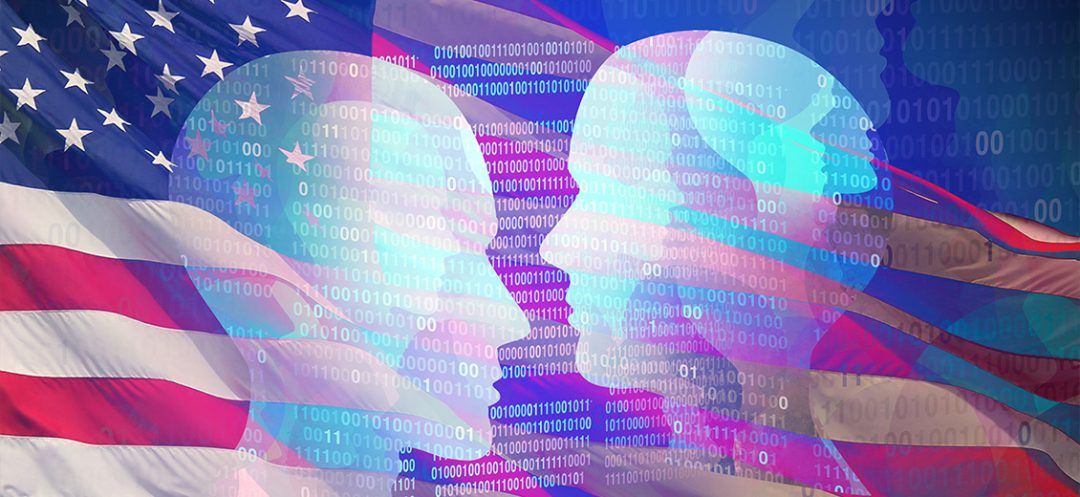- Home
- Middle East
- The Use of AI in the 2024 US Elections: Boon or Threat?

As the 2024 US elections approach in November, artificial intelligence (AI) is expected to play a significant role in shaping the political landscape, and it already is. From voter outreach to content generation and predictive analysis, AI has the potential to streamline campaign operations, enhance voter engagement, and offer more efficient ways of conducting elections. However, as with any powerful technology, its use also raises concerns about potential negative impacts on the electoral process and its outcomes. The incorporation of AI in elections presents both advantages and risks, making it crucial to evaluate how this technology may influence democracy. A great example is what happened recently with Taylor Swift.
The famous singer said on Tuesday that she plans to vote for Vice President Kamala Harris in November — and that AI-generated images circulating of herself pushed her in part to make her support public.
“Recently, I was made aware that AI of 'me' falsely endorsing Donald Trump’s presidential run was posted to his site. It really conjured up my fears around AI and the dangers of spreading misinformation,” Swift
. “It brought me to the conclusion that I need to be very transparent about my actual plans for this election as a voter. The simplest way to combat misinformation is with the truth.”
One of the most noticeable impacts of AI in the US election is its increasing role in political campaigning. AI tools are being deployed to analyze voter data, predict voting behavior, and craft targeted messaging. This has allowed political campaigns to reach specific voter segments with tailored messages based on demographic, geographic, and behavioral data. Tools like Jasper and Persado are widely used by political teams to create persuasive content, ensuring that their messages resonate with different groups of voters.
AI-powered chatbots have also become an essential part of voter outreach. Chatbots, such as those developed by Drift and HubSpot, allow candidates to engage with millions of voters simultaneously, providing information about policies and voting locations or even soliciting donations. These tools help campaigns save time and resources, ensuring that outreach is efficient and responsive to voter queries.
In the 2020 elections, AI tools like Zignal Labs were used to track misinformation and disinformation trends across social media platforms, helping campaigns and third-party organizations address these issues in real-time. In 2024, these tools are expected to become even more sophisticated, offering both proactive and reactive solutions to online misinformation.
Beyond outreach, AI has also been embraced for its predictive analytics capabilities. Machine learning algorithms can analyze historical election data, voting patterns, and real-time polling information to make predictions about election outcomes. Pollytics, an AI tool, uses big data analytics to forecast voter preferences and trends, helping campaigns strategize effectively.
While these advancements promise more accurate predictions, there is concern that over-reliance on AI forecasting could lead to unexpected outcomes. For example, in the 2016 US election, many polls predicted a victory for Hillary Clinton. While this was not solely due to AI, the reliance on flawed polling data highlights the potential dangers of using AI predictions as definitive outcomes. As algorithms are only as good as the data fed into them, they may still miss key nuances in voter behavior, leading to skewed predictions.
Despite its many benefits, AI’s use in elections has a darker side that raises concerns about its impact on the integrity of democratic processes. One of the primary concerns is the ability of AI to create and spread disinformation. With the rise of AI-powered deepfakes and synthetic media, the potential for malicious actors to create false images, videos, and audio recordings of candidates has become a major issue.
The use of AI in US elections could be considered a form of manipulation if it is employed in ways that influence voters unfairly or without transparency.
Furthermore, AI algorithms can potentially prioritize certain information or viewpoints over others, subtly steering public opinion. The ethical concerns around these technologies revolve around their potential to obscure the truth, create echo chambers, and reduce informed decision-making among voters. Therefore, the line between legitimate campaign strategies and manipulation becomes blurred, raising questions about the integrity and fairness of the electoral process, and this angle might be used by Trump’s campaign if they lose the 2024 elections.
Read more




Comments